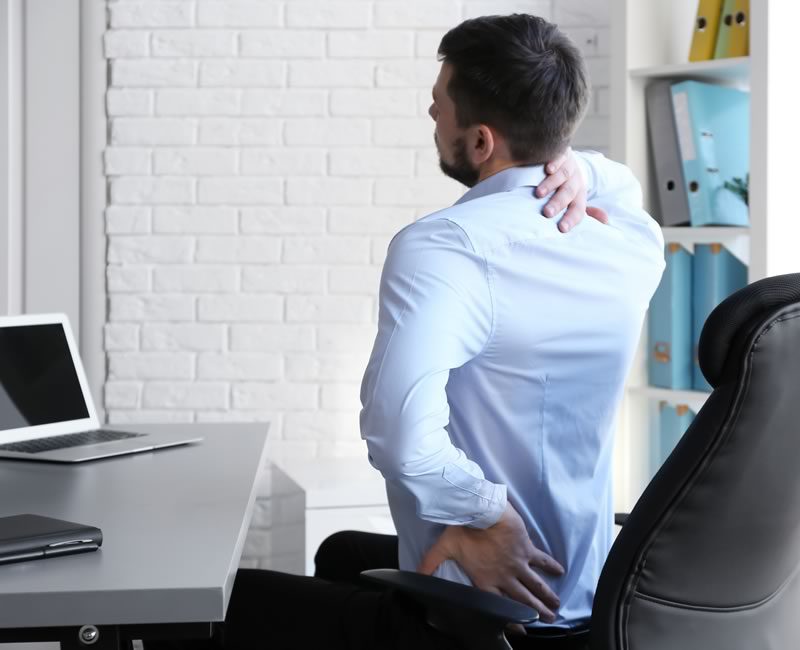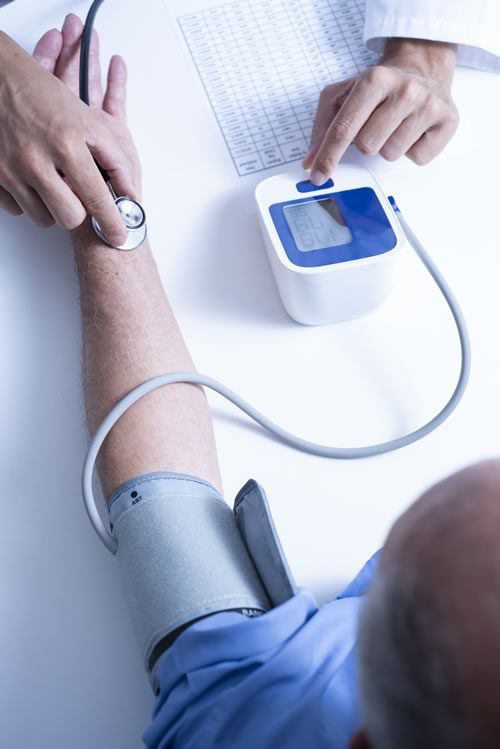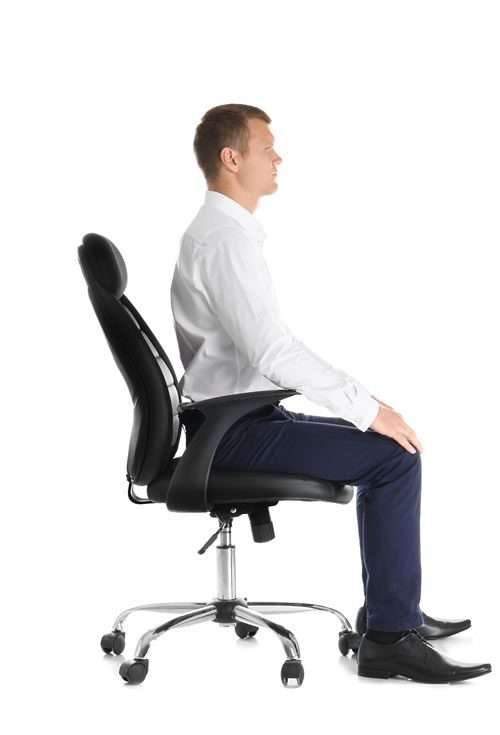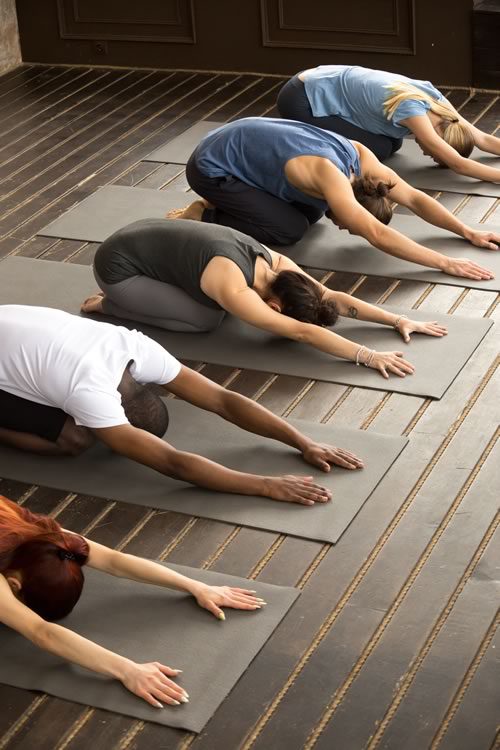Poor posture can hurt you and your health more than you realize.
Bad posture can affect your overall health, and set you up for
neck and shoulder strain, back pain, and even joint damage.
We have a Q&A with all the essential knowledge you need on poor posture and how to treat it.
What is Poor Posture?
Poor posture forces you to overwork the muscles in various parts of your body. When proper positioning and balance to your body’s alignment is compromised over time you can trend out of normal angles on a regular basis. Your immune system’s efforts to heal those muscles outgrowths inflammation that over time can lead to arthritis in nearby joints. It can often be traced to your achy neck and shoulder pain, stiffness, and back.


How to Check for Poor Posture?
To see what your posture is supposed to look like, pull your head back and your shoulders down and back. It will feel as if you’re sticking out your chest if you’re standing up correctly.
Here’s a quick guide to checking your posture:
- Your Hands in Relation to your Body:
What is the natural way your hands rest when you are standing? In fact, pay attention to the way your palms face compared to your body. Are they curved in and facing your thighs or are they parallel to your sides? If they are facing your thighs, then that is a sign of poor posture caused by spending hours hunched over a cell phone, computer or laptop. Your posture should be corrected as soon as possible to prevent unnecessary strain and pressure from hurting your back and spinal column. - Standing against the Wall Test.
Stand with your back against the surface of the wall. What parts of your body are touching the wall without any force from your side? With a proper posture the back of your head, shoulder blades, hips and feet should all be touching the wall. Another check is to bend your elbows and lift your arms up to your shoulders. Now try to touch the wall with the back of your wrists.
What Are the Effects of Poor Posture?
It can cause soreness, muscle pain, poor digestion, fatigue, and even low self-esteem. Slouching, stooping or remaining in the same position, especially when performing repetitive tasks, can place a huge strain on muscles, joints, and ligaments and can cause all of the above symptoms.
How Does Poor Posture Affect the Body?
Our bodies are machines that move fluid and gases back and forth. Prolonged sitting, especially with your legs crossed, can cut off the flow, increase pressure, and even cause spider veins. Poor posture, including slumped positions, is also thought to alter levels of the stress hormone cortisol and testosterone. Everything from wearing high heels to hours of smartphone use and crossing the legs can cause muscles to be used in repetitive ways. You may develop neck ache, lower back pain or tight hips overnight without being able to understand the reason behind this.
How Does Poor Posture Affect Hormones?
Slouches notably have increased feelings of depression and lower energy than skippers. This is because it results in decreased levels of cortisol and increased levels of the sex hormone testosterone that’s also associated with self-confidence.


How Does Poor Posture Cause Headaches?
When the body is hunched over, the jaw is more likely to tighten and clench. This clenching causes the muscles of the face to tighten, which is a common cause of tension headaches. Poor alignment can irritate delicate nerves that can create pin and tension.
How can Poor Posture Result in Back Pain?
One of the most common effects of bad posture is chronic back pain, usually because of disc degeneration or simply from the excess pressure being suffered by the spine. Disc degeneration occurs when the disks between the vertebrates thin out and lose their cushioning.
How Does Poor Posture Cause Neck Pain?
As the spine and other bones change their position due to the long-term effects of bad posture, the skeletal system begins to come into contact with surrounding nerves and “pinch” them. These pinched nerves can cause neck and back pain, but they can also cause pain in seemingly unrelated areas of the body.
Can Poor Posture Cause High Blood Pressure?
Bad posture could raise your blood pressure. Scientists say poor posture while sitting, standing, and slumping may cause hypertension, incontinence, heartburn, and headaches. It may also cause bloating and make breathing more difficult for asthmatics. It takes about 10 minutes of sitting or standing before the muscles in the spine and abdomen, that hold us up, start to get tired, and we lean forward.
Why Does Sitting with Poor Posture Cause Muscle Soreness?
One of the most common causes of low back pain is a poor sitting posture. Having a poor posture can put more stress on certain muscles and joints, forcing them to become overworked and causing them to become fatigued. Many patients with chronic pain can be helped by addressing their poor posture. If you’re like most people and you’re sitting at a computer all day at work and sit on a sofa all night at home, there’s a good chance you have some anterior pelvic tilt as a result of weak glutes and tight adductor muscles.
How Does Poor Posture Affect Lung Volume?
People with poor posture (rounded shoulders, tight pectoral muscles, forward heads) tend to have trouble creating a good breathing pattern. Diaphragmatic breathing is difficult for these people and even their shallow breaths are ineffective because of the restrictions around the chest. The implications are severe. To reset your posture you need to find ways to release these bad breathing muscles that get short and tight from overuse. Studies indicate that there are striking results based on posture. They found that slumping produced the worst lung capacity and expiratory flow. Normal sitting was better. Slumping in a chair produces bad results, but so can slouching or rounding your shoulders while standing. Sitting or standing straight for a few minutes after slouching most of your life is not good enough. Your muscles, tendons, and ligaments become trained by constant slouching. You need to re-train them by forming an entirely new habit.


How to Fix / Improve Poor Posture?
Start performing some exercises to strengthen your back muscles so they don’t get fatigued as quickly. If you don’t exercise or stretch regularly, that discomfort will also make it difficult to get to sleep at night. If this happens, you’ll wake up stiff and the whole cycle will start again. A lack of flexibility can lead to muscle imbalances and poor alignment. Include stretching in your weekly exercise program, and stretch daily to relieve specific points of discomfort. Try this super-easy stretch to relieve neck and shoulder stress:
- While standing or sitting, pull your head back, and center it over your spine.
- Pull your shoulders back and down, moving your arms as if you’re trying to put your elbows in your back pocket.
- Push palms outward as if you’re inside a door frame and hold for at least six seconds.
Do this a few times during every hour you’re sitting at your computer.
How to Improve Poor Posture of the Upper Body When Sitting?
- Distribute your body weight evenly on both hips.
- Bend your knees at a right angle, keeping them even with (or slightly higher) than your hips. Use a footrest or stool if necessary – your legs should not be crossed.
- Keep your feet flat on the floor.
- Try to avoid sitting in the same position for more than 30 minutes.
- At work, adjust your chair height and workstation so you can sit up close to your work and tilt it up at you. Rest your elbows and arms on your chair or desk, keeping your shoulders relaxed.
- When sitting in a chair that rolls and pivots, don’t twist at the waist while sitting. Instead, turn your whole body.
- When standing up from the sitting position, move to the front of the seat of your chair. Stand up by straightening your legs. Avoid bending forward at your waist. Immediately stretch your back by doing 10 standing backbends.
How to Help Seniors to Correct Poor Posture:
For seniors looking to reverse the effects of poor posture, the ultimate key to success is getting up and moving. Not only has prolonged sitting been linked to various lifestyle diseases and even early death, but it promotes harmful body positions like slouching, slumping, and hunching your shoulders. Experts recommend that seniors:
- Get up and move or stretch at least every 30 minutes while sitting,
- Commit to at least one hour of exercise for every 8 hours that are spent sitting, and
- Spend more time standing, for instance when you eat a quick lunch, work at the computer, and so on.


What Kind of Exercises Can Improve Poor Posture?
- The Chin Tuck can help to reverse forward-head posture by strengthening the neck muscles.
- Yoga poses, such as the child’s pose, stretches and lengthens your spine, glutes, and hamstrings. It also helps to release tension in your lower back and neck.
Does Sleeping without a Pillow Improve Poor Posture?
If you sleep on your back, a lot of researchers now say not to use a pillow. If you can’t be comfortable without a pillow, try to use the thinnest pillow you can. You can also get a pillow with a contour so your neck can stay in the normal supported position. If you sleep on your side, you can use a bigger pillow than you can on your back. Try to get the right size so there’s not too much pressure on your shoulder and not too much strain on your neck.
Will Sleeping on My Back Help My Posture?
Without a doubt the healthiest option for most people, sleeping on your back allows your head, neck, and spine to rest in a neutral position. This means that there’s no extra pressure on those areas, so you’re less likely to experience pain. Just be sure to use a pillow that elevates and supports your head enough – you want your stomach to be below your esophagus to prevent food or acid from coming up your digestive tract. However, snoozing on your back can cause the tongue to block the breathing tube, making it a dangerous position for those who suffer from sleep apnea (a condition that causes periods of breathlessness). This position can also make snoring more severe.
The Head & Neck Centers of Excellence for Treating Bad Posture
Our clinic addresses these components using a precise multifaceted approach to provide you not only with thorough care, but to provide you with lasting long-term results so that you can enjoy the life that you’re meant to. Using the most advanced Non-Surgical remodeling treatment technology on the market, you can experience significant pain reduction within as little as just a few visits. Our technique then aims to help restore normal spinal biomechanics and literally change your posture for the long-term.
Dr. Andrew Smith, D.C. realized that there was a real disconnect in the way that chronic headaches, jaw, and neck pain were treated. People were jumping from one form of therapy to another in search of a resolution to their pain. However, essential components that caused their symptoms weren’t being addressed, and so these people continued to suffer and were labeled as “chronic” pain sufferers. In fact, due to the success of his exclusive Non-Surgical A.S. Remodeling Procedure®, patients travel from around the country to seek his services. By addressing the underlying abnormal posture and joint positioning, reduction and resolution of symptoms is common.
So, if you’re presently suffering from headaches, chronic neck pain or TMJ issues, and have tried other treatment options without success, then you may be a candidate for Dr. Smith’s care.
For more information on treating poor posture, contact us today!
